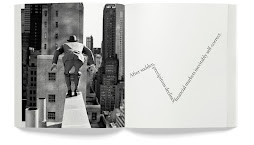Contact

ศิลปภาพถ่าย photography art สื่อศิลปะหลังสมัยใหม่ postmodern media art


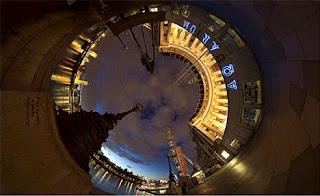

 ISTANBUL PANORAMAS
ISTANBUL PANORAMAS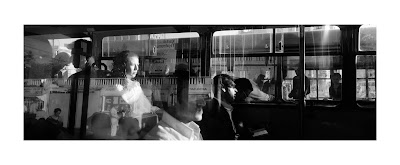
 Like shadows themselves, weaving through the interstices of the city, street-vendors, children and animals unselfconsciously perform the loneliness in the crowd which has characterized the modern city since Baudelaire wandered through Paris in the mid-nineteenth century. But in contrast to the commercial images glimpsed on billboards and busses which aspire to a Western identity, this is no Paris with its regular boulevards for the see-and-be-seen promenade, nor do we wish it to become one. Asci instead reveals a city which outgrows any attempts at planning, in which concrete cracks and crowds make unlikely daily homes for themselves without any intention of making an impression, without any consciousness of the impression they make on the camera. The city surrounded by water becomes a city with the solidity of water.
Like shadows themselves, weaving through the interstices of the city, street-vendors, children and animals unselfconsciously perform the loneliness in the crowd which has characterized the modern city since Baudelaire wandered through Paris in the mid-nineteenth century. But in contrast to the commercial images glimpsed on billboards and busses which aspire to a Western identity, this is no Paris with its regular boulevards for the see-and-be-seen promenade, nor do we wish it to become one. Asci instead reveals a city which outgrows any attempts at planning, in which concrete cracks and crowds make unlikely daily homes for themselves without any intention of making an impression, without any consciousness of the impression they make on the camera. The city surrounded by water becomes a city with the solidity of water.
 Since the nineteenth century, this complex waterfront of multiple shores - of Europe and Asia against the Sea of Marmara, the Black Sea, the straight which joins them, called the Bosporus, and the riverine port which joins it, known as the Golden Horn - has offered photographers a long series of panoramas through which to create the image of the exotic city, minarets pointing delicately to the sky. This panorama, however, is the view from outside. Like a veil, it points to what is hidden without showing it; it shows only to promise revelation without actually granting entry to the city. These photographs by Asci use the elongated format of the panorama to turn this common view of the city inside-out. Walking within its streets, meeting its inhabitants, caught in the web of their movements, we no longer exoticize the city as an impenetrable castle surrounded by a moat, but instead, along with the photographer, we respect its mystery, a never-ending series of curtains, unknowable as the most intimate belove.
Since the nineteenth century, this complex waterfront of multiple shores - of Europe and Asia against the Sea of Marmara, the Black Sea, the straight which joins them, called the Bosporus, and the riverine port which joins it, known as the Golden Horn - has offered photographers a long series of panoramas through which to create the image of the exotic city, minarets pointing delicately to the sky. This panorama, however, is the view from outside. Like a veil, it points to what is hidden without showing it; it shows only to promise revelation without actually granting entry to the city. These photographs by Asci use the elongated format of the panorama to turn this common view of the city inside-out. Walking within its streets, meeting its inhabitants, caught in the web of their movements, we no longer exoticize the city as an impenetrable castle surrounded by a moat, but instead, along with the photographer, we respect its mystery, a never-ending series of curtains, unknowable as the most intimate belove.Dr. Wendy M.K. ShawAssociate Professor,Faculty of Communications,Bahcesehir University, IstanbulCuratorial Associate,Istanbul Museum of Modern Art
http://www.arifasci.com/gallery_panorama.html
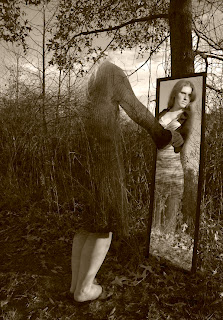 Name: jessica harp, Current StudentSchool: The Art Institute of PhiladelphiaArea of study: PhotographyMedia: PhotographArt Institutes class: -->Created on: 06/17/2009Tags: The Art Institutes
Name: jessica harp, Current StudentSchool: The Art Institute of PhiladelphiaArea of study: PhotographyMedia: PhotographArt Institutes class: -->Created on: 06/17/2009Tags: The Art Institutes
 Atget's work is unique on two levels. He was the maker of a great visual catalogue of the fruits of French culture, as it survived in and near Paris in the first quarter of this century. He was in addition a photographer of such authority and originality that his work remains a bench mark against which much of the most sophisticated contemporary photography measures itself. Other photographers had been concerned with describing specific facts (documentation), or with exploiting their indivisual sensibilities (self-expression).
Atget's work is unique on two levels. He was the maker of a great visual catalogue of the fruits of French culture, as it survived in and near Paris in the first quarter of this century. He was in addition a photographer of such authority and originality that his work remains a bench mark against which much of the most sophisticated contemporary photography measures itself. Other photographers had been concerned with describing specific facts (documentation), or with exploiting their indivisual sensibilities (self-expression). 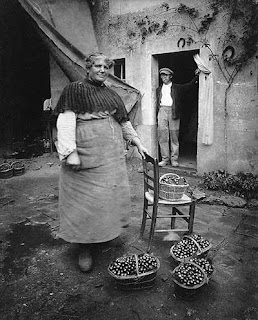




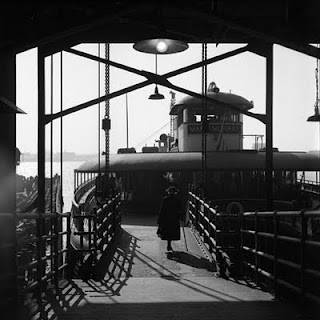

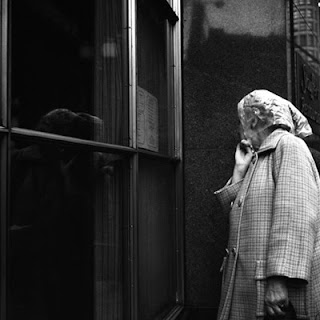 It took me days to look through all of her work. It inspired me to pick up photography myself. Little by little, as I progressed as a photographer, I would revisit Vivian's negatives and I would "see" more in her work. I bought her same camera and took to the same streets soon to realize how difficult it was to make images of her caliber. I discovered the eye she had for photography through my own practice. Needless to say, I am attached to her work.
It took me days to look through all of her work. It inspired me to pick up photography myself. Little by little, as I progressed as a photographer, I would revisit Vivian's negatives and I would "see" more in her work. I bought her same camera and took to the same streets soon to realize how difficult it was to make images of her caliber. I discovered the eye she had for photography through my own practice. Needless to say, I am attached to her work.
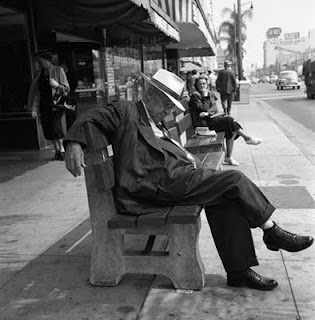 After some researching, I have only little information about Vivian. Central Camera (110 yr old camera shop in Chicago) has encountered Vivian from time to time when she would purchase film while out on the Chicago streets. From what they knew of her, they say she was a very "keep your distance from me" type of person but was also outspoken. She loved foreign films and didn't care much for American films.
After some researching, I have only little information about Vivian. Central Camera (110 yr old camera shop in Chicago) has encountered Vivian from time to time when she would purchase film while out on the Chicago streets. From what they knew of her, they say she was a very "keep your distance from me" type of person but was also outspoken. She loved foreign films and didn't care much for American films. 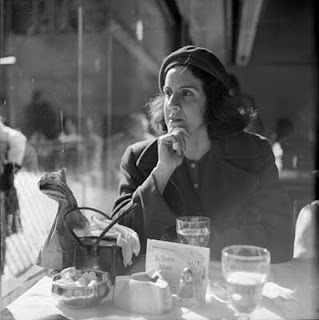 Some of her photos have pictures of children and often times it was near a beach. I later found out she was a nanny for a family on the North Side whose children these most likely were. One of her obituary's state she lived in Oak Park, a close Chicago suburb but, I later found she lived in the Rogers Park neighborhood, in Chicago.
Some of her photos have pictures of children and often times it was near a beach. I later found out she was a nanny for a family on the North Side whose children these most likely were. One of her obituary's state she lived in Oak Park, a close Chicago suburb but, I later found she lived in the Rogers Park neighborhood, in Chicago. I found her name written with pencil on a photo-lab envelope. I decided to 'Google' her about a year after I purchased these only to find her obituary placed the day before my search. She passed only a couple of days before my inquiry on her.
I found her name written with pencil on a photo-lab envelope. I decided to 'Google' her about a year after I purchased these only to find her obituary placed the day before my search. She passed only a couple of days before my inquiry on her.


 Philip's iconic work on the Vietnam War, an unprecedented work, published in 1971 under the title 'Vietnam Inc.' is arguably the most articulate and compelling anti-war statement made by any photojournalist ever. Indeed it led Noam Chomsky to comment that: "If anybody in Washington had read that book, we wouldn't have had these wars in Iraq or Afghanistan".
Philip's iconic work on the Vietnam War, an unprecedented work, published in 1971 under the title 'Vietnam Inc.' is arguably the most articulate and compelling anti-war statement made by any photojournalist ever. Indeed it led Noam Chomsky to comment that: "If anybody in Washington had read that book, we wouldn't have had these wars in Iraq or Afghanistan".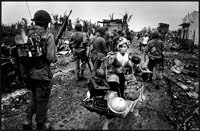
 Indeed, it was Philip's passion for peace that led to greatness in his later work. In 2005 he published "Viet Nam at Peace" a 25 year study exploring the long term consequences of the war. The first Westerner to travel by road from Hanoi to Ho Chi Minh City after the war, and later the Ho Chi Minh trail, he amassed an unparalleled photographic record of the post-war transformation of this country.
Indeed, it was Philip's passion for peace that led to greatness in his later work. In 2005 he published "Viet Nam at Peace" a 25 year study exploring the long term consequences of the war. The first Westerner to travel by road from Hanoi to Ho Chi Minh City after the war, and later the Ho Chi Minh trail, he amassed an unparalleled photographic record of the post-war transformation of this country. 
 Thoroughly industrious and tenacious to the end, Philip had just completed a new book of his less known studies of British life in the 1950s, 60s and 70s, entitled 'Recollections', and in the last few weeks before his death, Philip became thoroughly engaged in compiling his life's work documenting Cambodia.
Thoroughly industrious and tenacious to the end, Philip had just completed a new book of his less known studies of British life in the 1950s, 60s and 70s, entitled 'Recollections', and in the last few weeks before his death, Philip became thoroughly engaged in compiling his life's work documenting Cambodia.




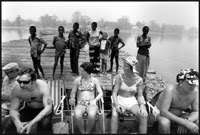
 Griffiths' work reflects on the unequal relationship between technology and humanity, summed up in his book Dark Odyssey. Human foolishness always attracted Griffiths' eye, but, faithful to the ethics of the Magnum founders, he believed in human dignity and in the capacity for improvement
Griffiths' work reflects on the unequal relationship between technology and humanity, summed up in his book Dark Odyssey. Human foolishness always attracted Griffiths' eye, but, faithful to the ethics of the Magnum founders, he believed in human dignity and in the capacity for improvement This woman was tagged with the designation VNC (Vietnamese civilian). The wounded were normally tagged VCS (Vietcong suspect) while the dead were posthumously elevated to the rank of VCC (Vietcong confirmed).
This woman was tagged with the designation VNC (Vietnamese civilian). The wounded were normally tagged VCS (Vietcong suspect) while the dead were posthumously elevated to the rank of VCC (Vietcong confirmed).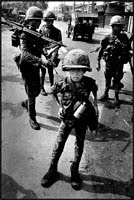 Ten-year old South Vietnamese soldier described as a ?little tigerÓ for killing two ?Vietcong women cadreÓ ? his mother and teacher, it was rumoured.
Ten-year old South Vietnamese soldier described as a ?little tigerÓ for killing two ?Vietcong women cadreÓ ? his mother and teacher, it was rumoured.


